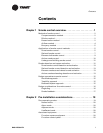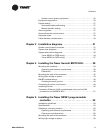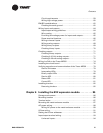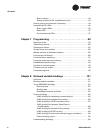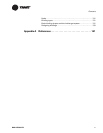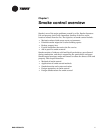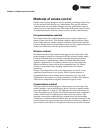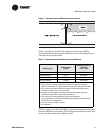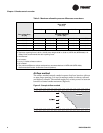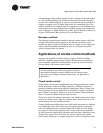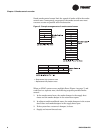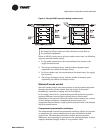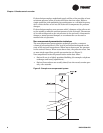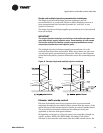
Chapter 1 Smoke control overview
2 BAS-APG001-EN
Methods of smoke control
Smoke control system designers use five methods to manage smoke. They
use the methods individually or in combination. The specific methods
used determine the standards of design analysis, performance criteria,
acceptance tests, and routine tests. The methods of smoke control consist
of: compartmentation, dilution, pressurization, air flow, and buoyancy.
Compartmentation method
The compartmentation method provides passive smoke protection to
spaces remote from a fire. The method employs walls, partitions, floors,
doors, smoke barriers, smoke dampers, and other fixed and mechanical
barriers. Smoke control system designers often use the compartmentation
method in combination with the pressurization method.
Dilution method
The dilution method clears smoke from spaces remote from a fire. The
method supplies outside air through the HVAC system to dilute smoke.
Using this method helps to maintain acceptable gas and particulate
concentrations in compartments subject to smoke infiltration from
adjacent compartments. In addition, the fire service can employ the
dilution method to remove smoke after extinguishing a fire. Smoke
dilution is also called smoke purging, smoke removal, or smoke
extraction.
Within a fire compartment, however, dilution may not result in any
significant improvement in air quality. HVAC systems promote a
considerable degree of air mixing within the spaces they serve and
building fires can produce very large quantities of smoke. Also, dilution
within a fire compartment supplies increased oxygen to a fire.
Pressurization method
The pressurization method protects refuge spaces and exit routes. The
method employs a pressure difference across a barrier to control smoke
movement (
Figure 1 on page 3). The high-pressure side of the barrier is
either the refuge area or an exit route. The low-pressure side is exposed to
smoke. Airflow from the high-pressure side to the low-pressure side
(through construction cracks and gaps around doors) prevents smoke
infiltration. A path that channels smoke from the low-pressure side to the
outside ensures that gas expansion pressures do not become a problem. A
top-vented elevator shaft or a fan-powered exhaust can provide the path.




